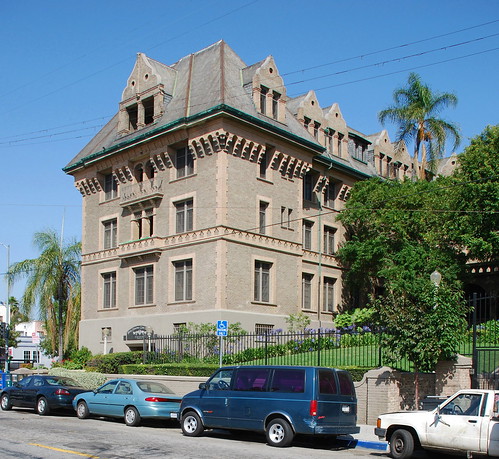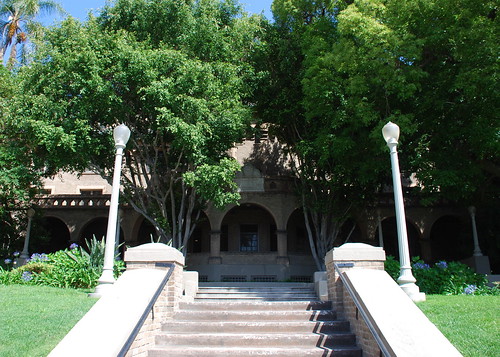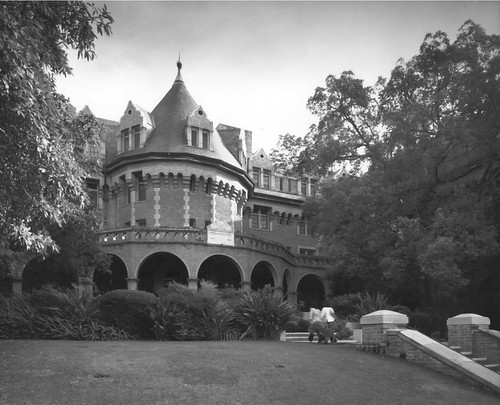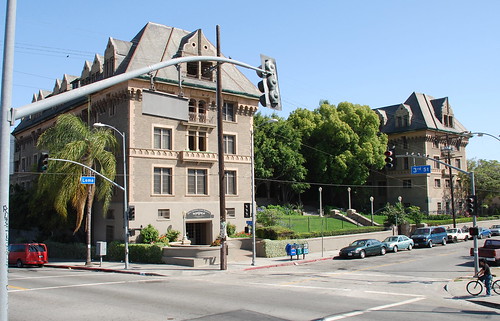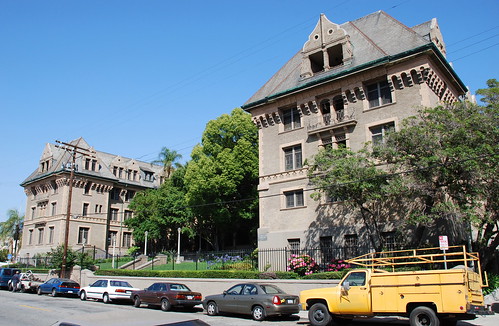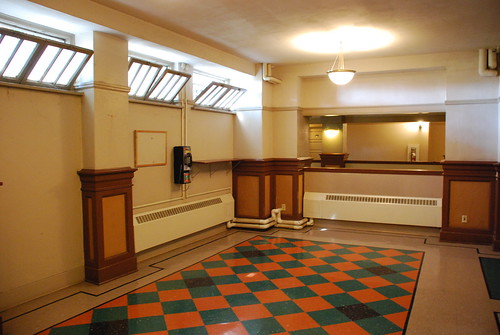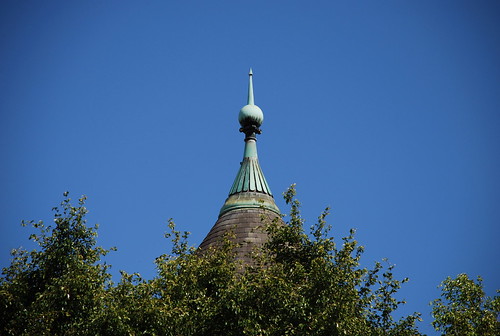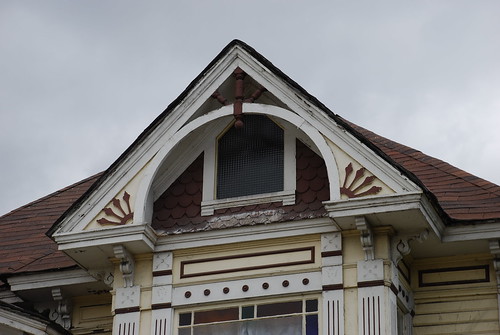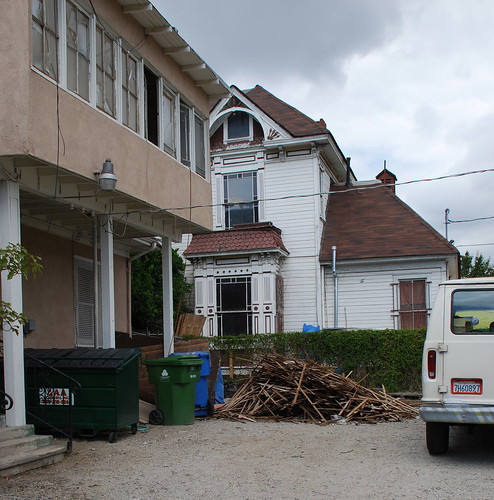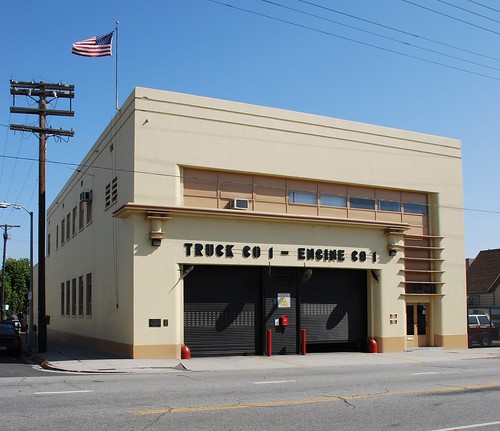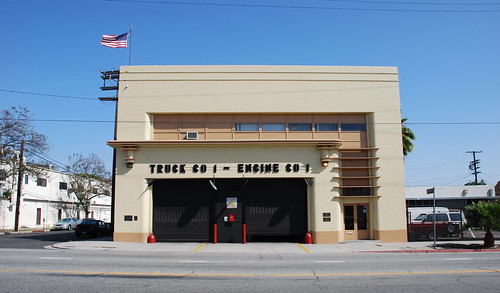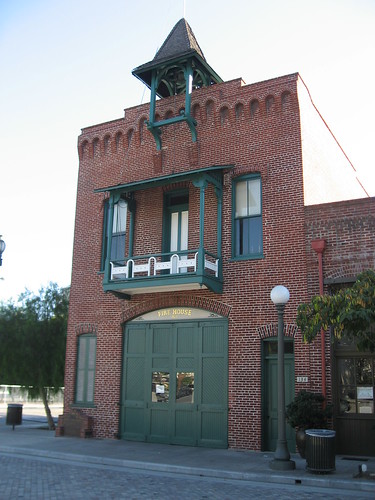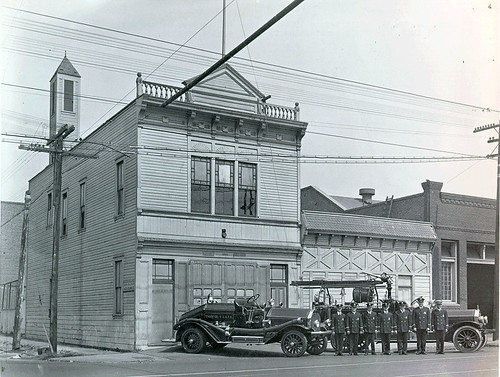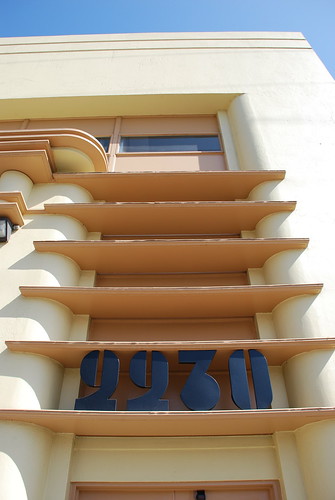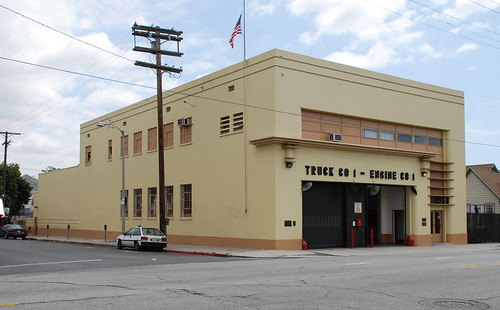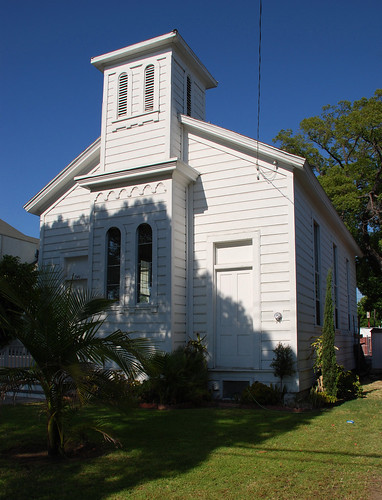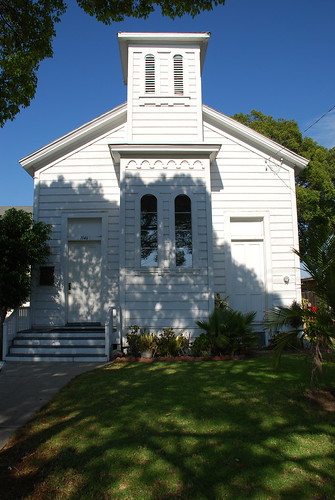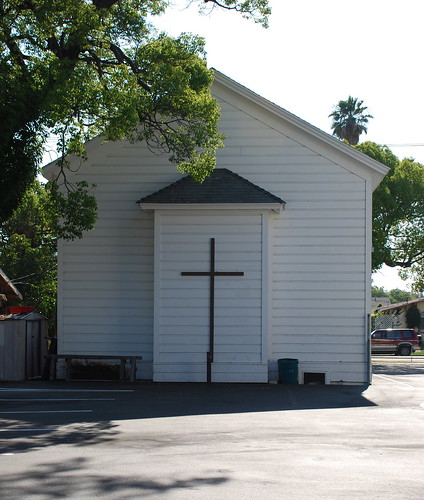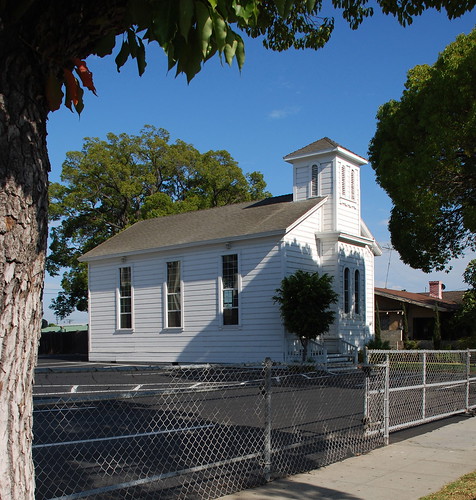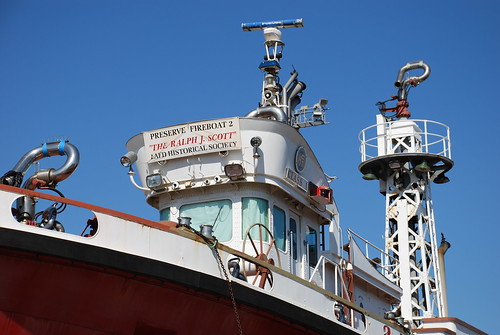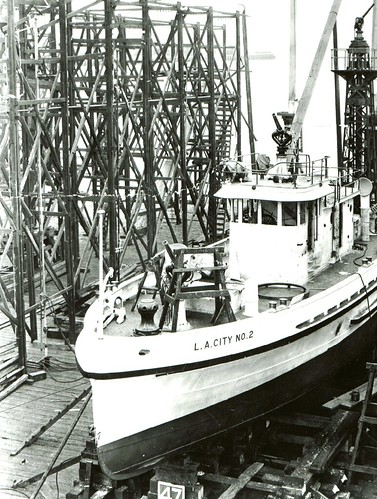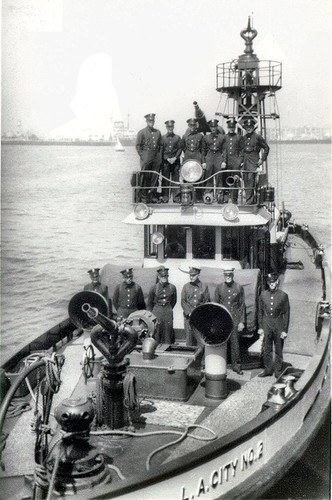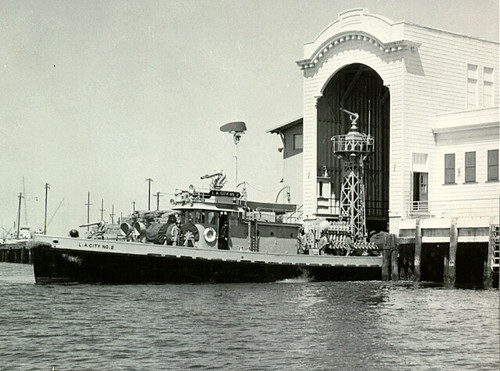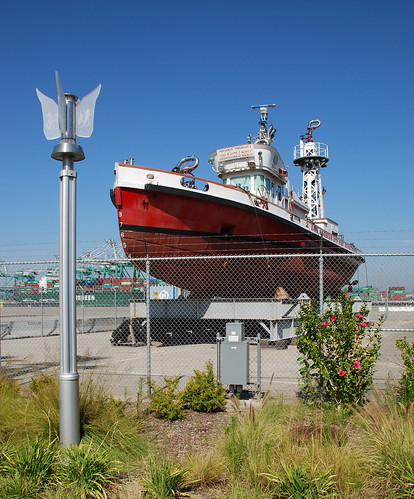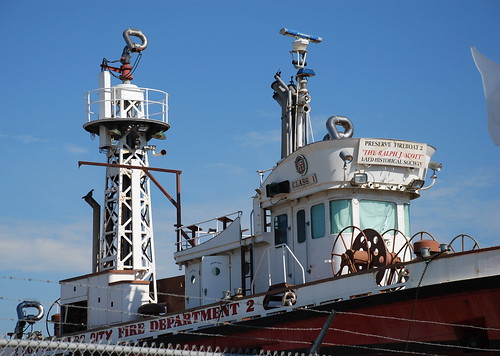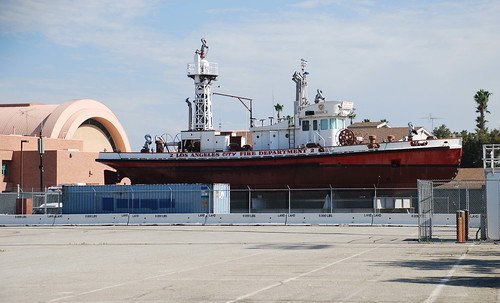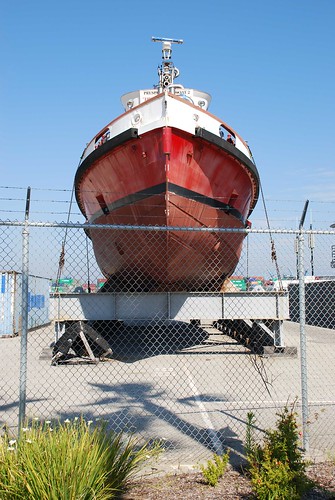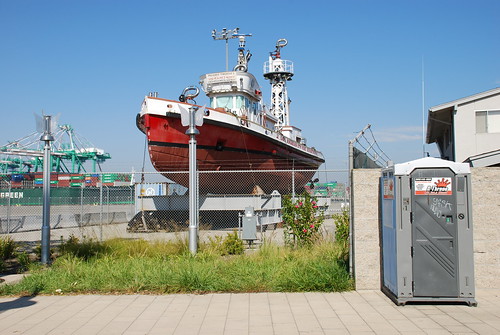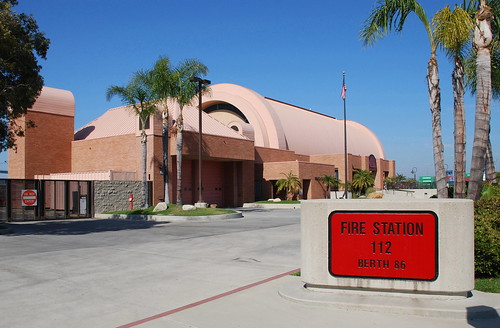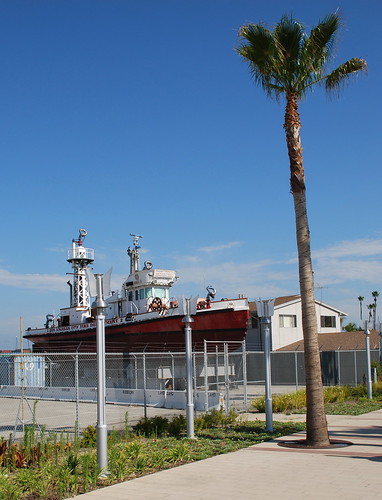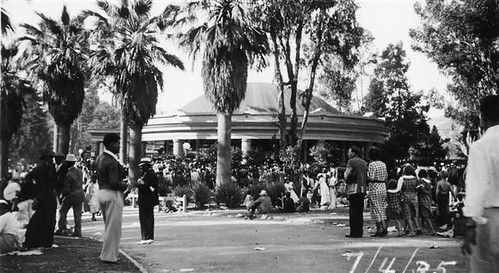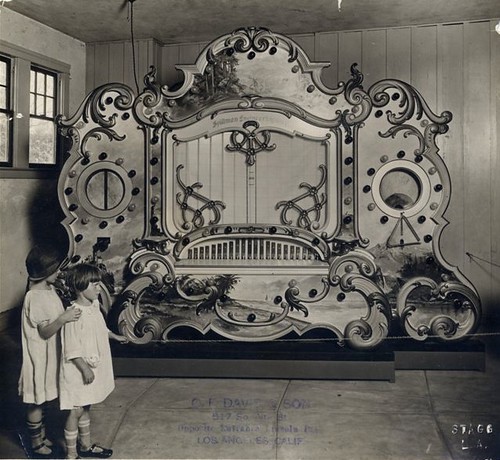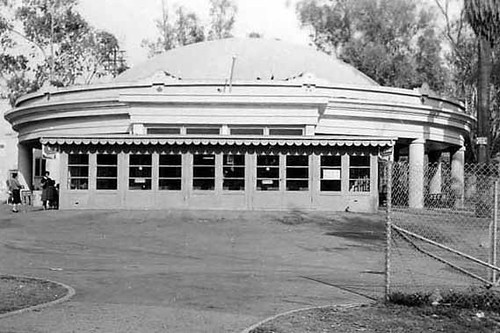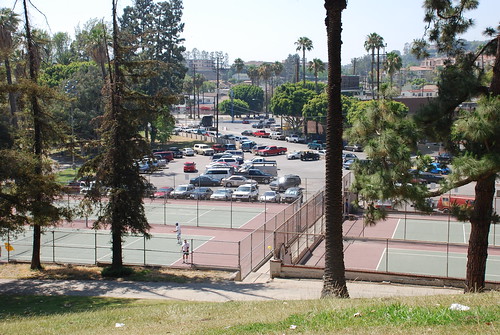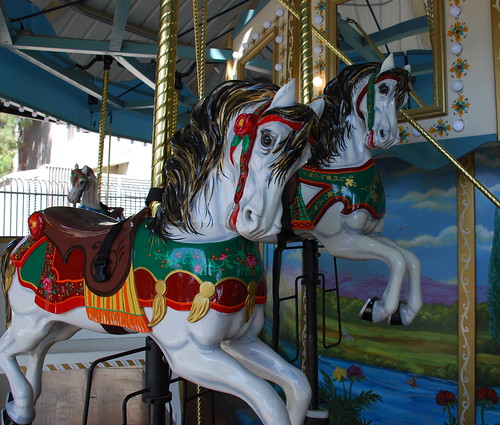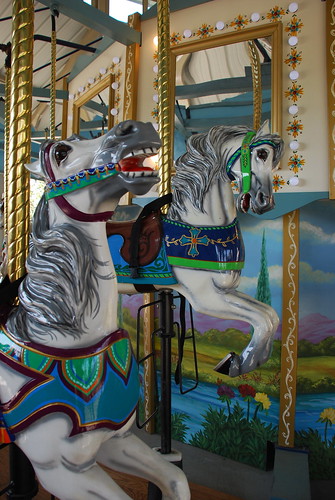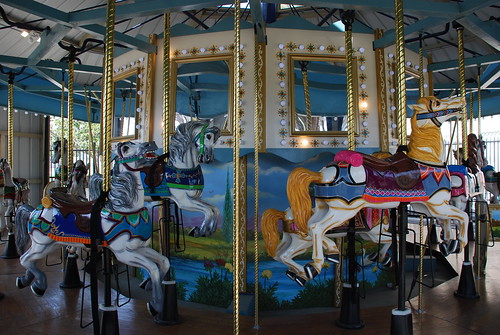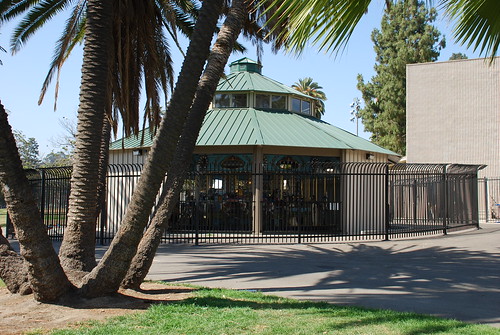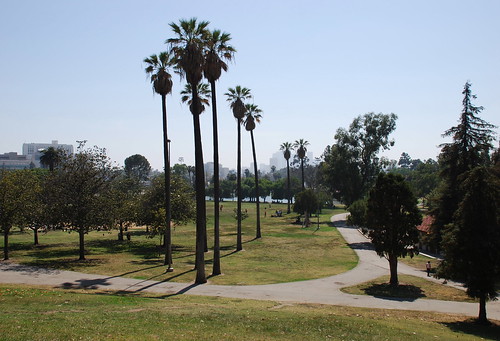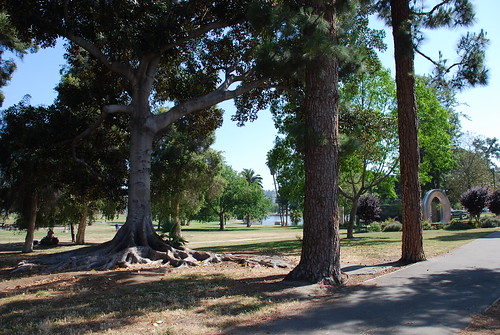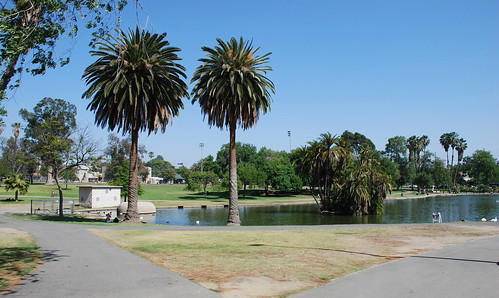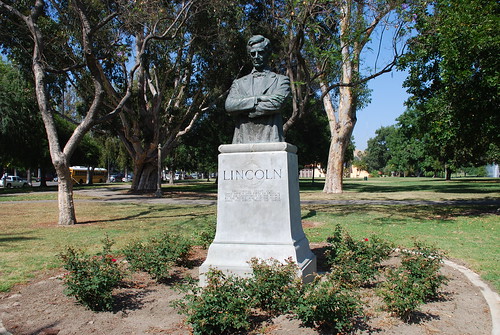Mary Andrews Clark Residence of the YWCA
1912 – Arthur B. Benton
306 Loma Drive – map
Declared: 7/7/76
Two decades before William Andrews Clark, Jr, bequeathed HCM No. 28, the 1925 Clark Library, to UCLA in memory of his dad, Clark Sr built this YWCA residence hall as a memorial to his mother, Mary.
Actually, the idea of building the Mary Andrews Clark Memorial Home, an “Institution of Comfort and Uplift,” can be credited to Clark’s sister, Mrs T.F. Miller, chairwoman of a special committee of the YWCA in Los Angeles, then on Hill Street downtown.
Clark, a former Montana senator, donated the cost of the project, about $200,000, chicken-feed, if you consider the stinking-rich Copper King was then living in his $10,000,000 mansion on Fifth Avenue in Manhattan.
Architect Arthur Burnett Benton (we ran into him at HCM No. 63), was already responsible for a few of the city’s YMCA and YWCA quarters when he created for Clark a very, very large building in the French Chateauesque style at the southeast corner of 3rd Street and Loma Drive. The memorial was “designed to afford a comfortable home and a protecting influence for working girls.”
From the Dept of City Planning website.
Did I mention it’s large? 200 x 132 feet including an open court of 100 x 112 feet. In fact, it’s so huge, it’s tough to get a shot of the whole thing (a little help, Martin Schall?). And don’t bother trying to get a good shot of the courtyard. I’m quite pro-tree, but it sure would be nice to see it opened up a bit.
In the early summer of 1912, while the building’s roof was being put up, the Los Angeles Times reported on what we’d find inside the building back then. The first floor originally held the lobby, administration offices, a large reception hall, two private parlors, a library, a lecture room to seat 300, a dining room for 200, and a gymnasium. The rest of the building held dormitories for about 200 girls, sleeping porches, sewing and workrooms, classrooms, a laundry, and a complete hospital suite.
After sustaining heavy damage in the Whittier Narrows earthquake, the building closed in 1987. Three years later, the YWCA sold it for $3 million to a non-profit developer, the L.A. Community Design Center. The group hired Killefer Flammang Architects to perform a seismic upgrade and renovation on the 76,600 square-foot landmark, turning the structure into an SRO with more than 150 rooms (had they not gotten to work when they did, the monument, in all likelihood, would’ve been lost in the Northridge earthquake). The Mary Andrews Clark Residence was rededicated in 1993 and re-opened in October 1994, with each floor having “a communal kitchen and lounge, and shower enclosures have been built into the hallways because most of the rooms have only half-baths.” Total rehabilitation costs ran to $16 million.
Killefer Flammang won a bunch of awards for their work, including a Merit Award from the AIA California Council and the L.A Conservancy’s Preservation Award. It was also in 1995 when the building was added to the National Register of Historic Places.
Thanks to a security guard, I got a quick look inside, but missed out seeing many of the rich details heralded back in 1912. It still looked to be in good shape.
Oh, and check out this list of just some of the movies (including The Wedding Planner and The Ring 2) and TV shows (ER and Charmed, for instance) filmed at the Mary Andrews Clark.
Sources:
“Working Girls’ Home Now Taking Shape.” The Los Angeles Times; Aug 11, 1911, p II1
“Memorial Home Takes Shape.” The Los Angeles Times; Jun 30, 1912, p. V1
Berestein, Leslie “Old YWCA Home is Reincarnated” The Los Angeles Times; Feb 5 1995, p. 8
Up next: Ralph J. Bunche Home
continue reading...



